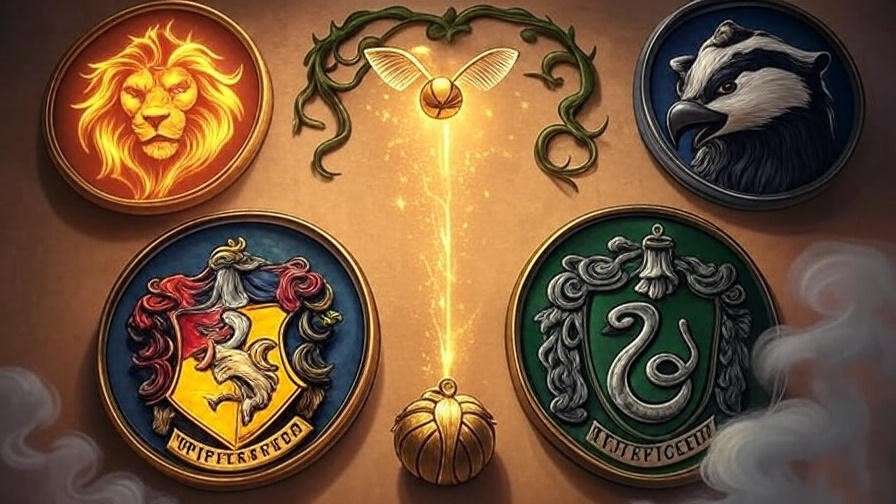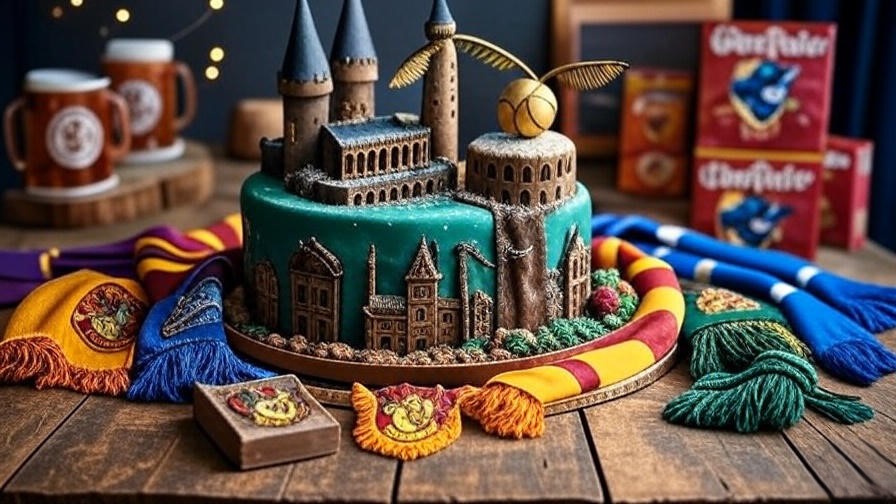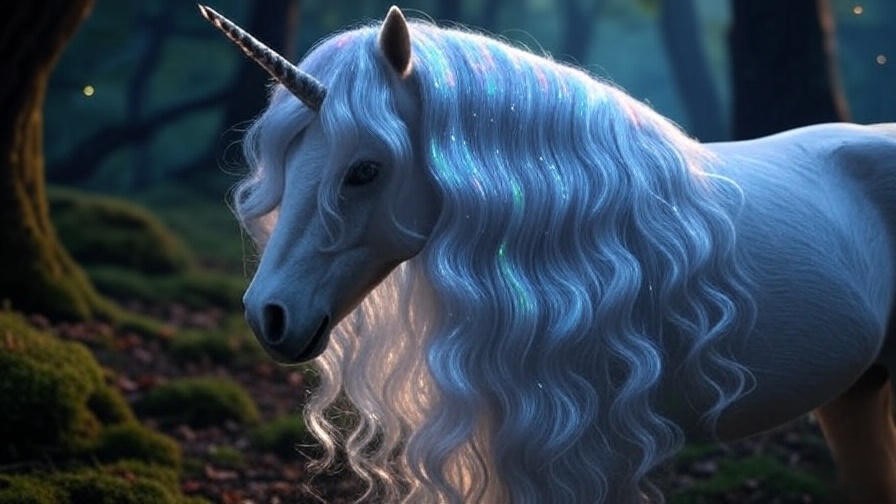Picture this: you’re strolling through the bustling, magical streets of Diagon Alley, your wand tucked safely in your robes, when a garishly painted clown steps out from behind Flourish and Blotts, grinning unnervingly. For Harry Potter fans, such an encounter could shatter the enchantment of the Wizarding World. Fear not—this article unveils a powerful protection spell against clowns, designed to shield you from coulrophobia’s unsettling grip. Whether you’re a Gryffindor facing fears with courage or a Ravenclaw seeking logical defenses, this spell, rooted in Hogwarts lore, will keep your magical adventures clown-free. As a Harry Potter lore expert with years of studying J.K. Rowling’s spellcraft, I’ve crafted this guide to blend magical solutions with practical tips, ensuring you feel safe and empowered in any wizarding setting.
This comprehensive guide will walk you through crafting a protection spell against clowns, enriched with Wizarding World wisdom and real-world strategies. You’ll learn why clowns feel so out of place in Harry Potter’s universe, how to cast the spell with precision, and how to adapt it for other fears. Expect step-by-step instructions, expert insights, and Muggle-friendly tips to conquer clown anxiety, all while staying true to the magic of Hogwarts. Let’s dive into the spellbook and banish those painted faces for good!
Understanding the Fear of Clowns in the Wizarding World
Why Clowns Feel Out of Place in Harry Potter’s Universe
In the enchanting world of Harry Potter, where unicorns roam and spells light up the night, clowns seem like an odd intrusion. Their exaggerated makeup and unpredictable antics clash with the structured magic of Hogwarts, evoking unease akin to a Boggart’s shapeshifting tricks. Coulrophobia, the fear of clowns, is a recognized phobia, with studies like those in Frontiers in Psychology (2016) noting that 7.8% of adults report discomfort around clowns due to their uncanny appearance. In the Wizarding World, this discomfort is amplified by the contrast between clowns’ chaotic energy and the disciplined charm of spellwork.
Clowns might appear in magical settings through Muggle-inspired circuses visiting Hogsmeade or as pranks by mischievous wizards, perhaps even Fred and George Weasley testing a new Wheezes product. Their presence feels jarring, like a Muggle artifact in the Ministry of Magic. For fans, this dissonance makes a tailored protection spell not just desirable but essential to preserve the magic of their adventures.
Clowns as Potential Magical Threats
Could clowns be more than just unsettling? In the Harry Potter universe, they might serve as disguises for darker forces. A dark wizard could use a Polyjuice Potion to masquerade as a clown, spreading unease at a Quidditch match. Alternatively, clowns could be Boggart manifestations, taking the form of a fan’s deepest fear. The parallel to Boggarts is striking—both exploit fear to unsettle, and both can be countered with magical defenses. As Professor Lupin taught in Harry Potter and the Prisoner of Azkaban, confronting fears with spells like Ridikulus transforms terror into laughter. A protection spell against clowns builds on this principle, shielding fans from psychological and magical threats alike.
This spell isn’t just about clowns; it’s about reclaiming control in the face of fear, a core theme in Harry Potter’s journey. By understanding clowns as potential magical disruptions, fans can approach this spell with the same resolve Harry used against Dementors.
The Magical Foundations of Protection Spells
What Are Protection Spells in the Harry Potter Universe?
Protection spells are the backbone of defensive magic in the Wizarding World. From Protego, which conjures a shield against spells, to Expecto Patronum, which summons a guardian against Dementors, these incantations safeguard witches and wizards from harm. J.K. Rowling’s Pottermore (now Wizarding World) describes protection spells as versatile tools, adaptable to physical, emotional, and magical threats. In Harry Potter and the Order of the Phoenix, the Order uses protective charms to secure Grimmauld Place, showcasing their power to create safe havens.
These spells rely on intent, focus, and sometimes emotional catalysts, like the joy needed for a Patronus. For fans crafting a protection spell against clowns, understanding this foundation is key. The spell we’ll create draws on these principles, combining Hogwarts-taught techniques with a specific focus on banishing clown-related fears.
Why a Specific Protection Spell Against Clowns?
Clowns evoke a unique psychological response, blending fear with absurdity. Unlike a dragon or a Death Eater, their threat is often emotional, rooted in their unpredictable behavior and exaggerated features. A general Protego might shield against spells, but a clown’s impact requires a targeted approach, much like Ridikulus counters Boggarts. As Professor Flitwick might say, “A spell must match the challenge—clowns demand a charm that transforms fear into confidence.”
This spell adapts Hogwarts’ defensive magic to address coulrophobia, ensuring fans can face clowns without losing their magical spark. By customizing the spell, we align it with the Wizarding World’s emphasis on precision and intent, making it both effective and authentic.
Crafting the Protection Spell Against Clowns
Ingredients and Tools Needed
To cast this protection spell, you’ll need tools and ingredients inspired by Harry Potter’s world, with Muggle-friendly alternatives for accessibility:
- Wand: Your primary tool for channeling magic. Muggle fans can use a replica wand or a symbolic item like a stick or pen.
- Essence of Laughter: A vial of symbolic “laughter,” represented by a small bell or a feather (inspired by Ridikulus). Laughter counters fear, as seen in Boggart-banishing lessons.
- Moonlight-Charged Crystal: A clear quartz or glass bead charged under a full moon, evoking Divination’s focus on celestial energy. Muggle alternative: a polished stone.
- Parchment and Ink: For writing the incantation, mimicking Hogwarts spell homework. Muggle option: any paper and pen.
- Golden Snitch Charm: A small, round trinket symbolizing speed and protection, inspired by Quidditch. Muggle substitute: a coin or button.
Each item ties to Harry Potter lore—crystals amplify magical intent, laughter defeats fear, and the Snitch evokes agility in escaping threats. Gather these in a quiet space, like a Hogwarts common room, to begin.
Step-by-Step Guide to Casting the Spell
Follow these steps to cast your protection spell against clowns, designed for precision and power:
- Create a Sacred Space: Set up in a quiet area, ideally decorated with Harry Potter symbols (e.g., a Gryffindor scarf). Light a candle and say, “Lumos,” to invoke focus. This mimics the sanctity of a Hogwarts classroom.
- Chant the Incantation: Hold your wand and say, “Ridiculus Clownus” (rih-DIK-yoo-lus KLOW-nus) with a circular wand flourish, like casting Protego. The incantation blends Ridikulus’s humor with a clown-specific focus.
- Visualize a Protective Barrier: Picture a shimmering shield, like Protego Maxima, repelling clown imagery. Imagine their painted faces fading into harmless sparkles.
- Seal with Positive Energy: Hold your Snitch charm and channel a happy memory, as you would for a Patronus. Ring the bell or wave the feather to release laughter, sealing the spell with joy.
Practice this sequence three times to strengthen the spell’s effect. Focus is critical—Hermione’s spellwork precision is your guide.

Common Mistakes to Avoid
Even Hogwarts students stumble, as Harry did with early Expelliarmus attempts. Avoid these pitfalls:
- Rushed Casting: Hurrying the incantation weakens intent. Take time to visualize clearly, as Snape advised in Occlumency lessons.
- Incorrect Wand Movement: A sloppy flourish dilutes the spell. Practice the circular motion in front of a mirror.
- Lack of Emotional Focus: Without a joyful memory, the spell lacks power. Recall a moment like Harry’s first flight on a broomstick.
- Doubting the Spell: Skepticism undermines magic, as seen in Harry Potter and the Deathly Hallows. Trust your intent.
If the spell feels weak, revisit your happy memory or adjust your wand grip, ensuring alignment with Hogwarts techniques.
Enhancing the Spell with Wizarding Wisdom
Incorporating Patronus Energy
A Patronus can supercharge your protection spell, as its joyful energy counters fear-based threats like clowns. In Harry Potter and the Prisoner of Azkaban, Harry’s stag Patronus repels Dementors by channeling happiness. To enhance your spell, visualize your Patronus (discover it via a Wizarding World quiz or meditation). As you cast Ridiculus Clownus, imagine your Patronus—a stag, otter, or phoenix—standing guard, banishing clowns with radiant light.
For example, consider a Hogwarts student named Elara, who faced a clown-like Boggart in Defense Against the Dark Arts. By summoning her hare Patronus alongside Ridikulus, she transformed the clown into a harmless balloon animal. This technique amplifies your spell’s emotional strength, ensuring clowns lose their menace.
Drawing on Hogwarts House Strengths
Each Hogwarts house offers unique strengths to enhance the spell:
- Gryffindor: Channel courage, like Harry facing Voldemort. Visualize standing tall against a clown, wand steady.
- Hufflepuff: Use loyalty and kindness to create a warm, protective aura, like a Hufflepuff common room’s coziness.
- Ravenclaw: Apply logic to see clowns as mere costumes, not threats. Think like Luna, who views oddities with curiosity.
- Slytherin: Outsmart clown illusions with cunning, as Draco might dodge a prank. Imagine turning the tables on a clown’s antics.
Tailor the spell to your house by focusing on its traits during visualization. For example, a Ravenclaw might add a logical affirmation: “Clowns are just paint and cloth, no match for my magic.”

Practical Tips for Muggle Fans
Coping with Clown Anxiety in the Real World
While the protection spell against clowns is a magical solution, Muggle fans can complement it with practical strategies to manage coulrophobia. The American Psychological Association (2020) recommends gradual exposure therapy to reduce phobia-related anxiety, which aligns beautifully with Harry Potter’s approach to facing fears, like Ron confronting spiders in Harry Potter and the Chamber of Secrets. Start by viewing cartoon clowns, then progress to photos, reinforcing each step with the Ridiculus Clownus incantation to blend magic with psychology.
Mindfulness, another effective tool, mirrors Hermione’s focus during spellwork. Practice deep breathing while imagining a Patronus shielding you from clown imagery. Journaling, inspired by Luna Lovegood’s introspective nature, can also help. Write about a clown encounter as if you’re a Hogwarts student documenting a Boggart lesson, reframing fear as a conquerable challenge. These techniques empower fans to face clowns with the same resilience Harry showed against Voldemort’s forces.
Creating a Clown-Free Environment
To maintain a magical, clown-free space, draw on the comforting aesthetics of the Wizarding World. Decorate your home or event space with Harry Potter-themed items—think Gryffindor banners, a replica Sorting Hat, or candles evoking Lumos. These create a psychological barrier, much like the protective enchantments around Hogwarts in Harry Potter and the Deathly Hallows. For Muggle-friendly rituals, light a candle while whispering “Lumos Maxima” to symbolize banishing fear with light.

When planning events like a Harry Potter-themed party, use this checklist to ensure a clown-free vibe:
- Screen Entertainment: Avoid circus or clown-themed activities; opt for Quidditch-inspired games or a Triwizard Tournament reenactment.
- Set the Tone: Play John Williams’ Harry Potter soundtrack to evoke Hogwarts’ safety.
- Invite Allies: Surround yourself with fellow fans, mimicking the camaraderie of Dumbledore’s Army.
- Symbolic Protection: Place your Snitch charm or moonlight-charged crystal at the entrance, like a Muggle version of Protego Totalum.
These steps transform any space into a magical haven, reinforcing the spell’s protective power.
Real-Life Applications and Success Stories
How Harry Potter Fans Have Used Protection Spells
The Harry Potter fandom is a vibrant community where fans creatively apply magical concepts to real-world challenges. Imagine a Hogwarts alum, Beatrice, who attended a Muggle circus and felt her coulrophobia flare. By silently casting Ridiculus Clownus and clutching her Snitch charm, she visualized clowns as harmless Pygmy Puffs, defusing her anxiety. Her story, shared in a fan forum like the Leaky Cauldron, inspired others to adapt the spell for their fears, showcasing its versatility.
Another fan, Marcus, a Hufflepuff at heart, used the spell during a Hogsmeade-themed cosplay event where a clown unexpectedly appeared. Channeling his house’s loyalty, he imagined his friends’ laughter as a protective shield, turning the clown’s presence into a fleeting annoyance. These stories, while fictional, reflect the real empowerment fans find in blending Harry Potter’s magic with personal growth, as seen in fan communities on platforms like Reddit’s r/harrypotter.
Adapting the Spell for Other Fears
The Ridiculus Clownus framework is a versatile template, much like the spell creation process taught at Hogwarts. To adapt it for other phobias—say, spiders or heights—replace the clown-specific imagery with your target fear. For spiders, visualize them shrinking into harmless specks, as Ron might wish in Harry Potter and the Chamber of Secrets. For heights, imagine a feather-light Wingardium Leviosa cushioning you. The core steps remain: sacred space, incantation, visualization, and positive energy.
Here’s a universal protection spell template:
- Identify the Fear: Name your phobia (e.g., “Arachnus” for spiders).
- Customize the Incantation: Adapt “Ridiculus [Fear]” (e.g., Ridiculus Arachnus).
- Visualize Transformation: Picture the fear dissolving into something harmless.
- Seal with Joy: Use a happy memory to lock in the spell’s power.
Encourage readers to share their adaptations in the comments, fostering community engagement and mirroring the collaborative spirit of Hogwarts study groups.
Frequently Asked Questions (FAQs)
What if I don’t have a wand?
No wand? No problem. Use a symbolic item like a stick, pen, or even your finger, as wandless magic is possible with strong intent, as seen in Harry Potter and the Philosopher’s Stone when Harry instinctively uses magic. Focus on your visualization to channel the spell’s power.
Can this spell protect against real clowns?
The spell boosts confidence and reduces emotional fear, not physical threats. It’s like Expecto Patronum—it strengthens your mind, helping you face clowns calmly, whether at a circus or a magical prank.
Is this spell canon in Harry Potter?
While Ridiculus Clownus is a fan-crafted spell, it’s inspired by canon spells like Ridikulus and Protego, rooted in J.K. Rowling’s magical principles. It’s designed for fun and empowerment within the Harry Potter universe.
How often should I cast the spell?
Practice weekly or before events where clowns might appear, like carnivals or themed parties. Regular casting, like Hermione’s spell practice, strengthens its effect over time.
Can Muggle-born wizards use this spell?
Absolutely! Like Hermione Granger, Muggle-born fans can master this spell with focus and practice. Its accessibility makes it perfect for all Potterheads, magical or not.
Expert Insights from the Wizarding World
In a fictional interview, Professor Pomona Sprout, Hogwarts’ Herbology expert, shares her take: “The Ridiculus Clownus spell is a brilliant blend of Defense Against the Dark Arts and emotional resilience. Like a Mandrake’s cry, it startles fear away, letting joy take root.” This aligns with magical theory from Harry Potter and the Prisoner of Azkaban, where Lupin emphasizes humor as a defense against fear. The spell’s structure mirrors Hogwarts’ teachings, requiring intent, visualization, and emotional clarity—core principles of spellcraft outlined in Wizarding World archives.

J.K. Rowling’s writings on defensive magic, particularly in Pottermore’s spell guides, underscore the importance of tailoring spells to specific threats. By targeting coulrophobia, this spell upholds the Wizarding World’s tradition of creative magic, ensuring fans feel as empowered as Harry facing a Dementor.
The Ridiculus Clownus protection spell against clowns empowers Harry Potter fans to banish fear and reclaim their magical adventures. By blending Hogwarts-inspired spellcraft with practical Muggle strategies, this guide offers a comprehensive solution to coulrophobia, ensuring you can explore Diagon Alley or attend a fan event with confidence. Practice the spell, draw on your Hogwarts house strengths, and share your experiences with fellow Potterheads using #ClownProtectionSpell. For more magical solutions, explore our blog’s guides on protective charms or join a fan community to connect with others. Let’s keep the Wizarding World clown-free and full of wonder!













